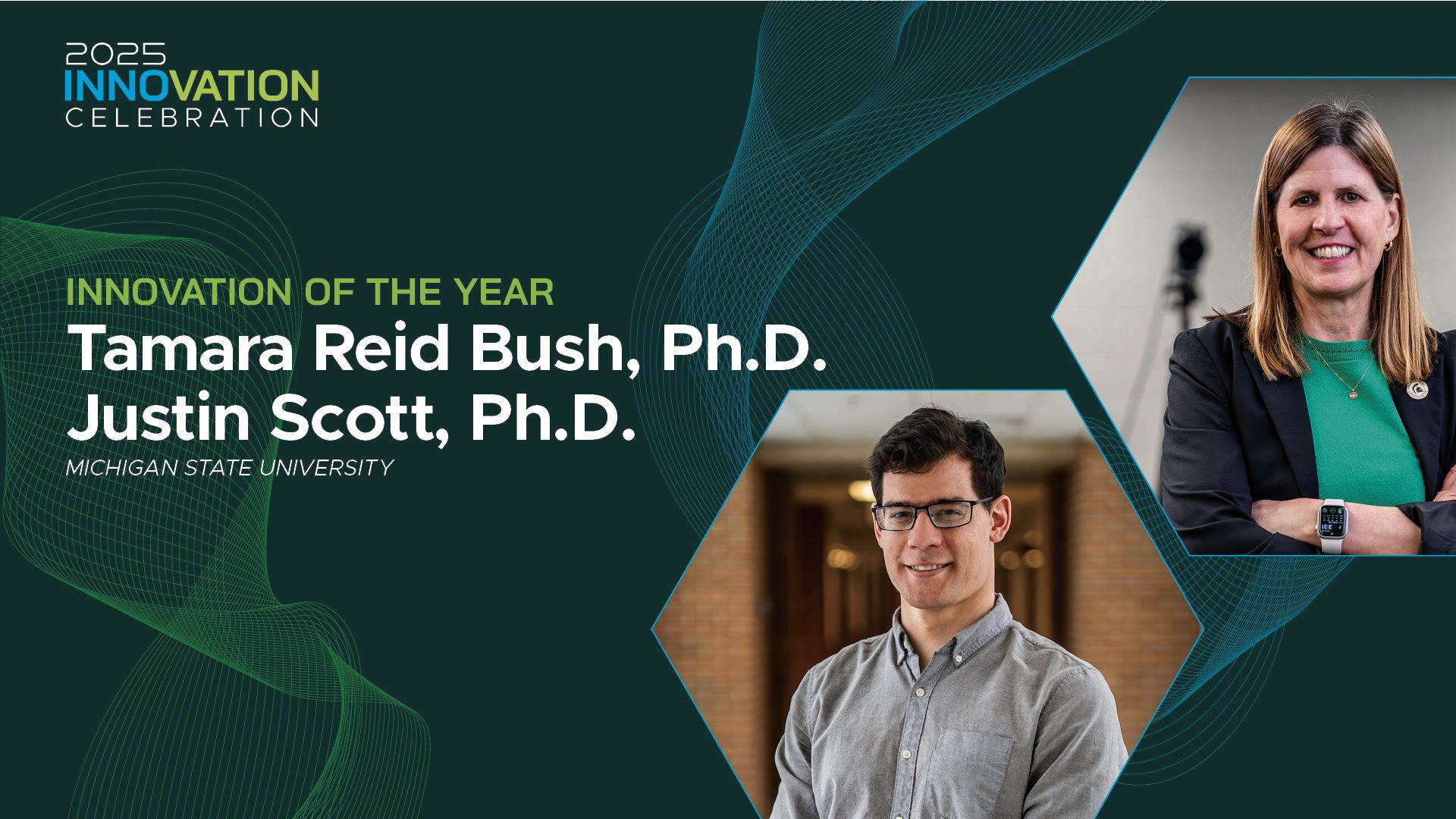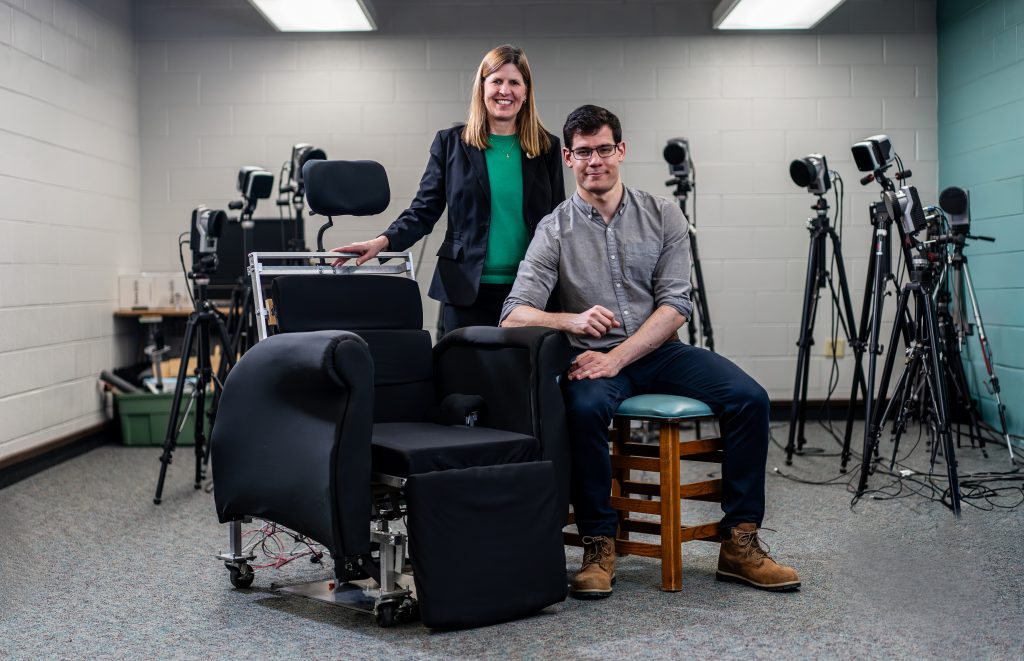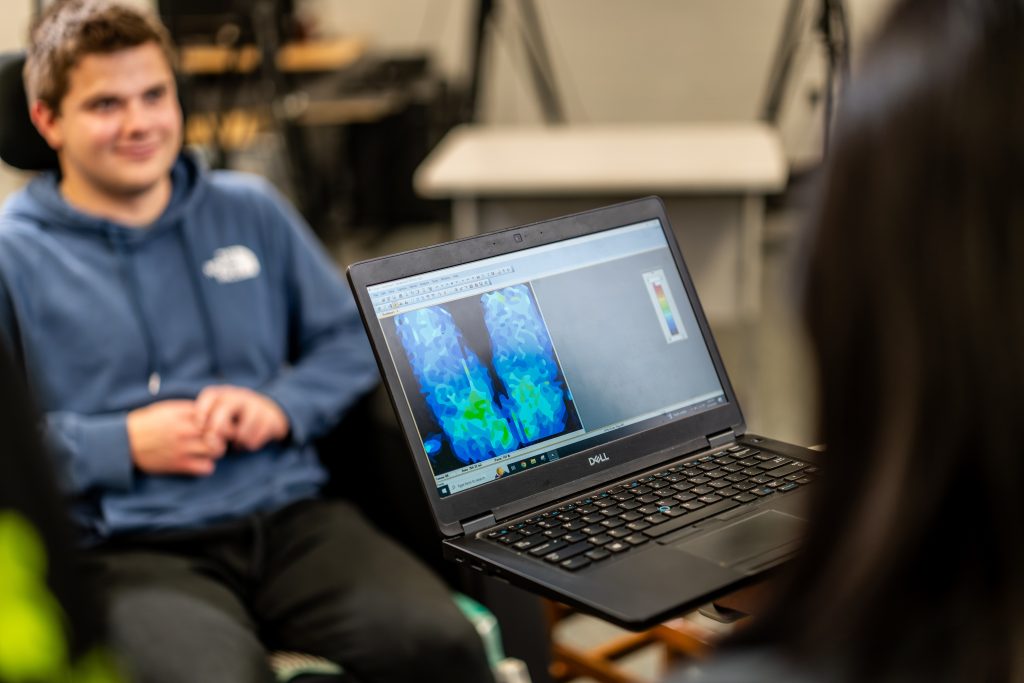As life expectancy continues to rise, the health care industry faces new challenges. A growing number of aging patients with limited mobility, coupled with ongoing staffing shortages — from nurses to home health aides — increases the risk of preventable injuries and illnesses, including pressure sores.
Pressure sores, also known as bedsores, form when individuals remain in the same position for extended periods without movement. These painful wounds are difficult to treat and costly, with each case costing hospitals up to $130,000 and contributing to an annual $26 billion in health care expenses. Left untreated, they can lead to severe complications and even death.
Tamara Bush, professor of mechanical engineering and associate dean for inclusion and diversity at Michigan State University, and Justin Scott, biomechanics research associate, have developed a breakthrough solution to help address this widespread issue. Their innovation, Sit Sense, was named the 2025 MSU Innovation of the Year and is designed to reduce the likelihood of pressure sores for hospital patients — one of the most pressing concerns in health care today.
“Traditionally, nurses have to come in and manually lift and move the patient — the goal is every two hours,” says Bush. However, with rising shortages in nursing staff, assisted living and home health care, which are already overwhelming the U.S. health care system, this minimum recommendation often goes unmet, leaving patients more vulnerable to developing pressure sores.
A game-changing innovation
Sit Sense is a patented technology that automatically identifies high-pressure regions on the body and repositions patients accordingly, with particular attention to high-risk, pressure-prone areas like the buttocks and lower and upper back. The technology allows physicians and caregivers to program the seat, offering different posture supports for the patient, with repositioning adjustments as frequently as every 20 minutes.
“We’ve studied how repositioning affects pressure distribution on the body and developed this technology based on our work to redistribute pressure on each region of the body in a cyclic manner,” says Scott, whose biomechanical expertise was crucial to the development of the first prototypes of a recliner that will soon undergo pilot testing across multiple hospitals. User feedback from those pilots will guide further refinement before the technology reaches the commercial market.
From concept to reality
“We actually started with the thought process that the chair would know what you needed before you did, like a sixth sense,” says Bush, who first envisioned an earlier iteration of the technology in 2016 and has since dedicated years to studying seating ergonomics in medical and office environments.
With support from MSU Technologies, the research team received an issued U.S. patent in 2024 and is actively seeking FDA approval, paving the way for widespread commercial use of Sit Sense. MSU is also pursuing patents in Europe and Canada.
“In my opinion, Sit Sense serves multiple purposes,” says Anupam Jhingran, senior technology manager at MSU Technologies. “Firstly, Sit Sense could eliminate or reduce the incidents of pressure injuries in patients; secondly, it could also free up precious time that caregivers put in to move the patients manually. And finally, it would save these caregivers from getting injuries themselves. So, it has a lot of value for any health care organization. To my knowledge, there isn’t anything in the market that addresses these needs.”
Guidance and support from MSU’s innovation ecosystem
In addition to the technology transfer professionals at MSU Technologies, the research team benefited from the expertise of mentors in residence, or MIRs, and entrepreneurs in residence, or EIRs, who provided valuable commercial insights and helped anticipate market challenges. “These are seasoned entrepreneurs and they bring in a lot of commercial perspective. Given their experience, our MIRs and EIRs can assess the challenges a technology may encounter as it goes through the development cycle and help us address those challenges well ahead of time. The mentors were part of the team as the prototype was in the development, and their insights remain very helpful as the inventors continue the development of Sit Sense,” says Jhingran.
Scott recently received a T3N Venture Postdoc Fellowship through the support of the Michigan Economic Development Corporation and the MSU Research Foundation. This award, based on a plan developed with the help of a team composed of MSU Technologies, MSU Research Foundation and MIRs, will support Scott and Sit Sense in writing commercialization grants, pitching presentations and developing other entrepreneurial skills to help prepare for launching a successful startup company.
“This unique program helps create ‘homegrown’ startup leaders at MSU,” says Jhingran. “Through this program, Justin is gaining the experience needed to lead a company, secure funding and engage investors.”
Bringing Sit Sense to market
The researchers acknowledge the essential support from the MSU Innovation Center, the MSU Research Foundation and many other partners in the MSU innovation ecosystem who assisted in bringing Sit Sense closer to market. Providing expert guidance to help the Sit Sense team navigate funding, patents and business logistics has allowed them to focus on readying the Sit Sense technology for widespread use.
“Having them believe in us and having us partner with really good people to make that happen allows us to focus on the things that we do well. We didn’t have to worry about searching for funding, a patent attorney and other things that, as trained engineers, are not our strengths,” says Scott. “It is really gratifying to be able to see it go from a project in a lab that is now on the precipice of being in the final stages of development into commercialization. Our science can actually help people right now.”
The future of Sit Sense
Scott says receiving the Innovation of the Year award, which recognizes highly innovative technologies developed at MSU, is both gratifying and surreal. He has watched Sit Sense develop from a concept to a game-changing solution. “I think it’s really a testament to the work itself and the impact that it’s going to have on people’s lives,” he says.
In future years, the MSU team envisions Sit Sense utilized in hospitals, nursing homes, clinical therapy settings, dialysis centers and even for individuals with prosthetics or who work in occupations that require long hours of sitting. With two million people currently living in nursing and assisted living facilities, the market for this technology is only increasing.
“I went into biomechanics to make a difference in the world and make a difference in people’s lives, and I see this as a really strong possibility of making that happen,” says Bush. “Not all innovations make it beyond the lab, but Sit Sense has the potential to improve the lives of countless people — from patients and caregivers to aging adults and those in specialized occupations. That’s what inspires me.”
This originally appeared on the Innovation Center website.


